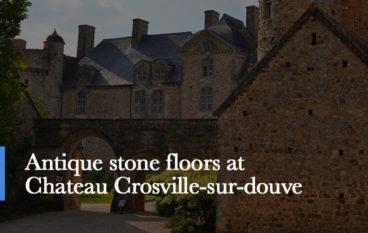In general it is authentic natural reclaimed alternatives to modern materials that our clients come to us for, to re-use on their fascinating and diverse projects. However no two projects are the same. Our French and international clients are enthusiastically and creatively re-using the antique materials we source (and sometimes rescue !) from mainly re-development demolitions for their own restoration and new-build projects. Clients’ properties range from historic houses and gardens (whether humble vernacular or proudly grandiose) to contemporary modern architecture and landscapes, in locations literally from the Equator to the Arctic Circle.
This blog takes the form of observational visits by BCA Antique Materials’ « guide » David Ackers. The aim is photographing locations and details of materials used creatively and aesthetically in the past, gaining patina and wearing well after hundreds of years’ of wear and tear. David points to equivalent or comparable references available at BCA Antique Materials and their subsidiary Pierre & Parquet (for new flooring and paving). This way architects, designers and property owners are assisted in their decision-making for their own projects.
David Ackers has been BCA’s consultant partner for over 25 years, daily assisting with appropriate materials selections for stock and client choices for their projects. He is a qualified Architecte d’Intérieur, senior member of both France’s « Union Nationale des Architectes d’Intérieur-Designers » (UNAID) and the « British Institute of Interior Designers » (BIID). Earlier in his career he was employed as an appropriate building materials expert for low-cost housing, working in Africa, Asia and South America. Sharing decades of experience these blog articles are glimpses of visits to chateaux, manoirs and gardens, but also to authentic vernacular properties, towns and villages.
The re-use of authentic materials and architectural features for interiors and exteriors (whether wood, stone, terracotta or whatever) has motivated us all over the years. Should we be blowing our own trumpets about the ecological and « green » merits of this activity, which is after all self-evident? We hope these straightforward and unpretentious comparisons will be of benefit to many like-minded people, wherever their projects may be.






